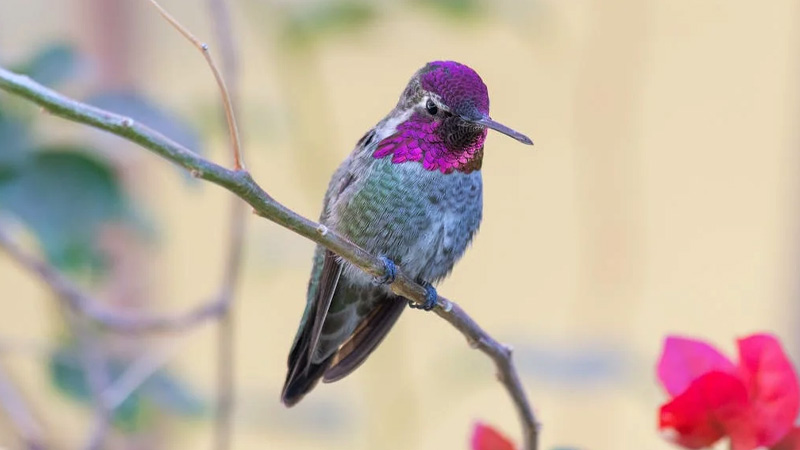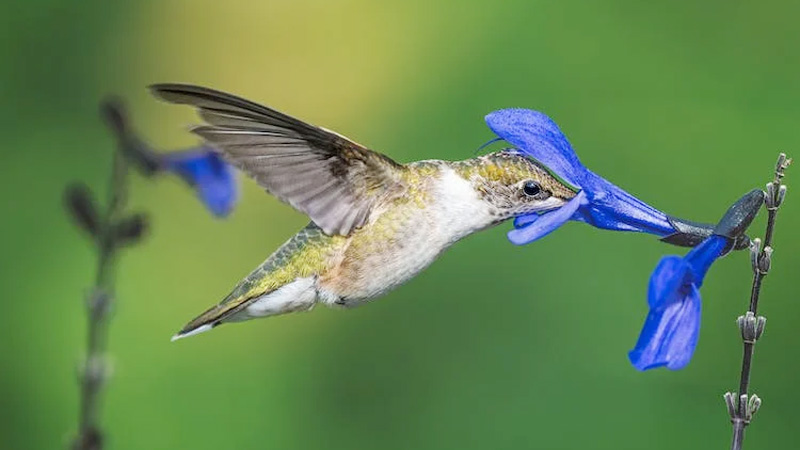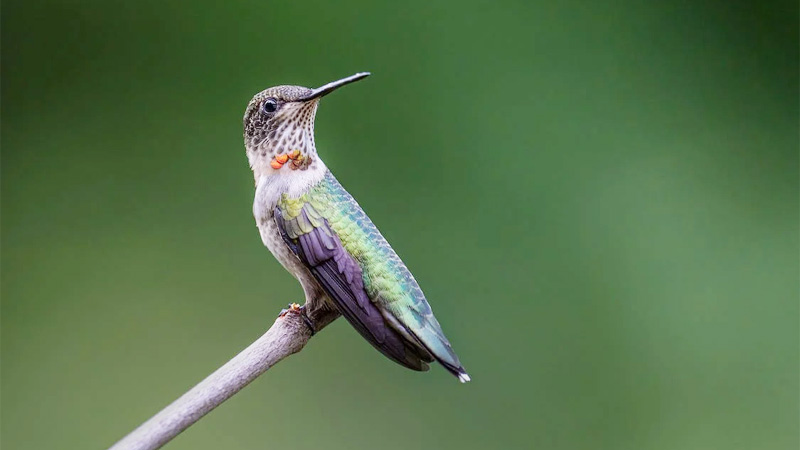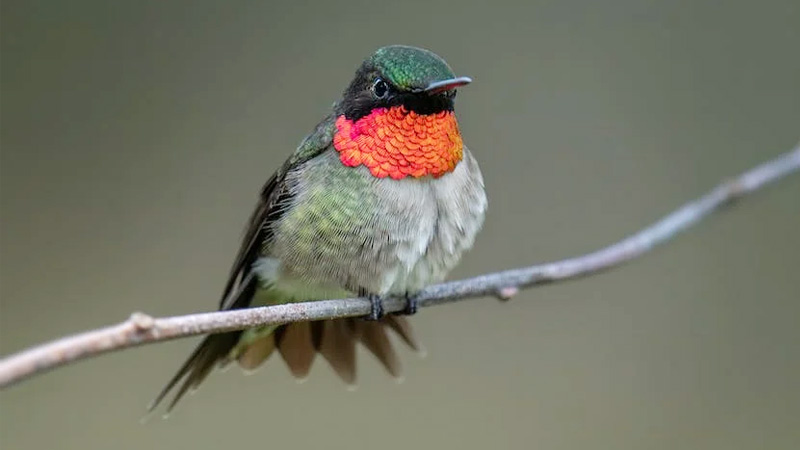The symbolism surrounding the Hummingbird is deeply ingrained in cultures around the world, captivating the human imagination for centuries. As a tiny creature with vibrant colours and incredible flight abilities, the Hummingbird holds a special place in our hearts and symbolizes a multitude of qualities and concepts.
From joy and resilience to love and spiritual connection, the symbolism associated with hummingbirds is diverse and holds rich cultural significance.
In this article, we will delve into the captivating symbolism for hummingbirds, exploring the depths of meaning and interpretation that have made them enduring symbols in various traditions.

Symbolism for Hummingbird
Here are some of the symbolism for Hummingbirds-
Resilience and Adaptability:
The Hummingbird is often seen as a symbol of resilience and adaptability. Despite its small size, the Hummingbird is known for its remarkable ability to fly great distances, hover in mid-air, and navigate challenging environments.
It teaches us to be adaptable in the face of adversity and to find strength in our ability to overcome obstacles.
Joy and Playfulness:
The Hummingbird is often associated with joy, playfulness, and living in the present moment.
Its quick movements, vibrant colours, and seemingly carefree nature remind us to embrace the simple joys in life and to savour each moment with a childlike sense of wonder.
Energy and Vitality:

Hummingbirds have an incredibly high metabolism and require a constant supply of nectar to fuel their energetic flight. As a symbol, the Hummingbird represents boundless energy, vitality, and the ability to accomplish great feats despite limitations.
It encourages us to tap into our inner reserves of energy and pursue our passions with enthusiasm and determination.
Love and Beauty:
The graceful and elegant presence of the Hummingbird is often associated with love and beauty. In various cultures, the Hummingbird is believed to be a messenger of love and an embodiment of the divine.
It reminds us to cherish the beauty in the world around us and to cultivate love and compassion in our relationships.
Spiritual Significance:
In some spiritual traditions, the Hummingbird is regarded as a symbol of spiritual awakening, transformation, and the ability to access higher realms of consciousness.
Its ability to hover between worlds, its connection to flowers and their nectar, and its ethereal presence make it a powerful symbol of spiritual growth and enlightenment.
These interpretations of hummingbird symbolism may vary across different cultures and belief systems.
Ultimately, the symbolism of the Hummingbird holds personal significance, and individuals may resonate with different aspects of its representation based on their own experiences and beliefs.
What Does a Hummingbird Symbolize Around the World?

Here some reason what does a Hummingbird symbolize around the world-
Native American Cultures:
In Native American cultures, the Hummingbird is often seen as a messenger of joy, healing, and love. It is believed to bring good luck and positive energy.
The Pueblo tribes view the Hummingbird as a symbol of abundance and fertility, while the Hopi people associate it with timeless joy and the ability to find sweetness in life.
Aztec and Mayan Civilizations:
In Aztec and Mayan civilizations, the Hummingbird held great significance. It was associated with agility, beauty, and power.
These cultures believed that the Hummingbird represented the sun, connecting it to life force and vitality. Hummingbird imagery can be found in their artwork, reflecting its spiritual and symbolic importance.
Caribbean and Central America:
In Caribbean and Central American folklore, the Hummingbird is considered a symbol of love, romance, and courtship. It is often associated with poetry, music, and the pursuit of beauty.
The vibrant colours of the Hummingbird’s feathers are seen as symbols of passion and attraction.
Far East and Ancient Japan:
In Japanese culture, the Hummingbird is associated with endurance, agility, and overcoming challenges. It is regarded as a symbol of perseverance and the ability to achieve great things despite limitations.
In the Far East, the Hummingbird is also seen as a messenger of good luck and blessings.
Andean Cultures:
In Andean cultures of South America, the Hummingbird symbolizes energy, vitality, and spiritual awakening. It is considered a guide to accessing higher realms of consciousness and spiritual enlightenment.
The Hummingbird’s ability to move between different dimensions is seen as a metaphor for transcending boundaries and connecting with the divine.
These interpretations of hummingbird symbolism vary across different cultures and regions.
While there are common themes of joy, beauty, and spiritual significance, the specific associations and cultural meanings can differ.
The Hummingbird’s symbolic importance serves as a testament to its captivating nature and the profound impact it has had on diverse cultures worldwide.
What Does a Hummingbird Symbolize in Literature?

Now we’re gonna discuss what a Hummingbird symbolize in literature-
Beauty and Delicacy:
In literature, the Hummingbird often symbolizes beauty and delicacy. Its vibrant colours, graceful movements, and ethereal presence make it a captivating symbol of natural beauty.
It is frequently used to evoke images of enchantment, elegance, and the fleeting nature of life’s precious moments.
Transformation and Growth:
The Hummingbird is also associated with themes of transformation and growth in literature. Its ability to hover, dart, and swiftly move from one place to another is seen as a metaphor for personal growth, adaptability, and embracing change.
The Hummingbird’s journey can represent a transformative process or a character’s evolution throughout a story.
Freedom and Independence:
Literature often portrays the Hummingbird as a symbol of freedom and independence. Its ability to fly freely and navigate vast distances without restraint resonates with themes of liberation, breaking free from constraints, and embracing one’s individuality.
The Hummingbird’s presence can symbolize a longing for freedom or a desire to explore new horizons.
Energy and Vitality:
The Hummingbird is frequently associated with energy and vitality in literature. Its rapid wing beats, high metabolism, and constant quest for nectar exemplify a zest for life and an unwavering pursuit of sustenance.
The Hummingbird’s depiction represents a vibrant and lively spirit, showcasing the importance of enthusiasm and embracing the fullness of existence.
Transience and Impermanence:
In literature, the Hummingbird can symbolize the fleeting nature of life and the transient moments that pass all too quickly.
It is swift movements and short lifespan evokes a sense of impermanence and the need to cherish the present.
The Hummingbird’s presence can serve as a poignant reminder to appreciate the fleeting beauty and cherish the preciousness of each passing moment.
The symbolism of the Hummingbird in literature is diverse, reflecting the multifaceted nature of this captivating creature.
From beauty and transformation to freedom and transience, the Hummingbird’s presence in literary works adds depth and symbolism to the themes explored within the narratives.
FAQ
The Hummingbird symbolizes various qualities depending on cultural interpretations. Common symbolic meanings include joy, resilience, adaptability, love, beauty, spiritual connection, freedom, and the fleeting nature of life’s precious moments.
The Hummingbird’s vibrant colours, energetic flight, and seemingly carefree nature make it a symbol of joy. Its presence serves as a reminder to embrace the lighter side of life, find joy in the present moment, and approach challenges with a positive outlook.
In spiritual contexts, the Hummingbird symbolizes spiritual awakening, transformation, and the ability to access higher realms of consciousness. Its ability to hover between worlds and its ethereal presence makes it a powerful symbol of spiritual growth and enlightenment.
The Hummingbird’s association with flowers and nectar ties it to themes of love and romance. Its vibrant colours, graceful movements, and courtship displays make it a symbol of love, attraction, and the pursuit of beauty.
It reminds us to foster loving relationships and cultivate harmony in our interactions with others.
The Hummingbird’s short lifespan and swift movements symbolize the transient nature of life. Its presence reminds us to appreciate the beauty in the present moment, cherish the fleeting experiences, and embrace the preciousness of each passing moment.
It serves as a reminder to seize opportunities and live fully in the present.
Conclusion
The symbolism attributed to hummingbirds resonates deeply within human culture and spirituality. From ancient civilizations to modern interpretations, the Hummingbird symbolizes qualities that inspire and captivate.
Its beauty, resilience, and ability to transcend boundaries have made it a powerful symbol of joy, transformation, and connection to the divine.
Whether representing love, freedom, or the transient nature of life, the symbolism of hummingbirds continues to ignite our imagination and remind us of the profound relationship between nature and the human spirit.
As we gaze upon these enchanting creatures, let us embrace the symbolism they embody and find inspiration in the lessons they teach us about resilience, beauty, and the fleeting moments that make life truly extraordinary.